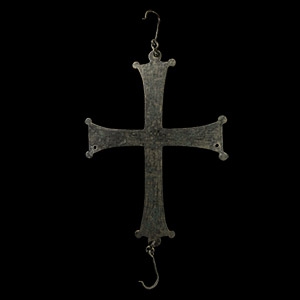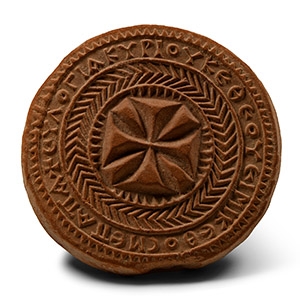Home > Auctions > 4 June - 8 June 2024
Ancient Art, Antiquities, Natural History & Coins
Auction Highlights:
Ex Paul Munro Walker collection, Bournemouth, UK, 1970s.
Private collection of Alexander Cotton, Hampshire, UK, sold October 1986.
From a London gentleman's, UK, collection, in the 1990s.
This lot has been checked against the Interpol Database of stolen works of art and is accompanied by a search certificate number no.12104-216215.
For the bust type cf. denarius of Nero and Agrippina dating to 55 AD; Roman Silver Coins: RSC 4, Roman Imperial Coins: RIC 7, and Roman Coins and their values, Sear 2044.
Dr Ittai Gradel writes: 'Date is AD 51-55. On most glyptic portraits from shortly after he became emperor, so 54-55, he is shown laurelled ... However, on the coins he is shown also bare-headed even as emperor in 54-55 (second coin, denarius). Again, on coins his bust is shown draped only before he became emperor in 54 (first coin, aureus), but cameos show him draped also as emperor (as e. g. the Marlborough one: but there are several known). It is therefore not possible to say if the emerald shows him as crown prince or as emperor, and I cannot date it more precisely than 51-55.'
From the property of late Mr SM, London, UK, 1969-1999.
From the glyptic collection of Mr X; thence by descent.
Acquired Hotel des Ventes, Drouot, Eve SVV, Paris, France, 28 June 2017, no.156 (Part).
Property of a French collector.
Ex German art market, 2000s.
Acquired from an EU collector living in London.
From the collection of Surrey, UK, gentleman.
Acquired in the mid 1980s-1990s.
From the family collection of Mr S.A., Switzerland, thence by descent.
Private collection since the late 1990s.
This lot has been checked against the Interpol Database of stolen works of art and is accompanied by a search certificate number no.12107-218183.
Cf. Chadour, A.B., Rings. The Alice and Louis Koch Collection, volume I, Leeds, 1994, item 174.
Ex property of a late Japanese collector, 1970-2000s.
Acquired on the German art market, 1989-1995.
with The Museum Gallery, 19 Bury Place, London, WC, UK, 1998-2003.
Property of a London based academic, 2003-present.
Ex property of a late Japanese collector, 1970-2000s.
This lot has been checked against the Interpol Database of stolen works of art and is accompanied by a search certificate number no.12108-217865.
Cf. Lightfoot, C.S., Ancient Glass in the National Museums of Scotland, Edinburgh, 2007, item 307, for type.
From the collection of a late East Anglian teacher and antiquarian who retired to the Isle of Wight in Hampshire, UK.
He amassed a large collection of objects between the 1960s-1980s.
Cf. The Corning Museum of Glass, accession number 300-399, for type.
Ex Surrey, UK, collection of a gentleman, 1960-2000s.
In 563 A.D., Paul the Silentiary visited Hagia Sophia in Constantinople and described the wondrous lighting effects, ‘Thus is everything clothed in beauty…no words are sufficient to describe the illumination in the evening: you might say that some nocturnal sun filled the majestic church with light.’ The church was lit by polycandela, an early type of candelabra that held glass oil lamps rather than candles. The lamps were either conical or shaped like round bowls with an elongated stem attached beneath. Amidst the burning of incense and the chanting of prayers, the flickering light must have helped to inspire pious devotion. Contemporaries certainly attest to this feeling and among the surviving accounts, that of Arculf, Bishop of Gaul, is particularly affecting. In 670 he went on a pilgrimage to Jerusalem and visited the Church of the Ascension, ‘…to the customary light of the eight lamps…on the night of the feast of the Lord’s Ascension it is usual to add innumerable other lamps; and under the terrible and wondrous gleaming of these, pouring out copiously through the shutters of the windows, all Mount Olivet seems not alone to be illuminated, but even to be on fire, and the whole city, situated on the lower ground nearby, seems to be lit up.’
From the early 19th century collection of General Sir George Cockburn (1763-1847), Shanganagh Castle, Co Wicklow, Ireland, sold at auction between 1935-1939.
From the collection of the late Dr J.D.H. Widdness, Dublin, Ireland.
Accompanied by a handwritten letter by Dr Widdness explaining the bottle's history and provenance, plus a typed transcription.
Accompanied by a copy of an old black and white photograph of Dr Widdness holding and admiring the bottle while sitting in his study.
From the collection of Sir Daniel Donohue [1919-2014] and the Countess Bernardine [1904-1968], Los Angeles, USA; the collection was assembled in the 1950-1960s, but before March 1968.
with Bonhams, London, 13 April 2011, no.310 (part).
Accompanied by a copy of the relevant Bonhams catalogue pages.
Accompanied by a copy of an Art Loss Register certificate no.S00120713.
This lot has been checked against the Interpol Database of stolen works of art and is accompanied by a search certificate number no.12109-218144.
The cross is surrounded by a zig-zag frieze enclosed within a long inscription in medieval Greek, this confirms the use of the seal in a liturgical context. The practice of preparing bread for Holy Eucharist and Antidoron is still in use in the churches of the East.
97 - 108 of 2809 LOTS

.jpg)

.jpg)
.jpg)
.jpg)

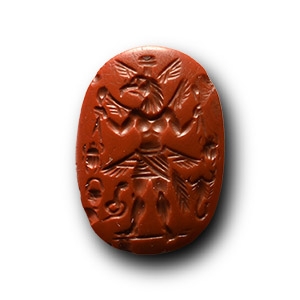

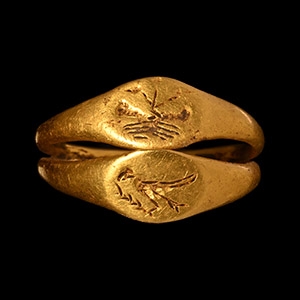
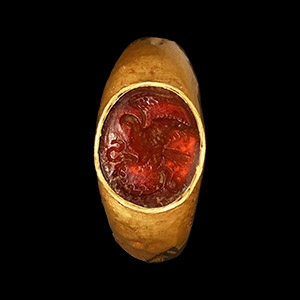

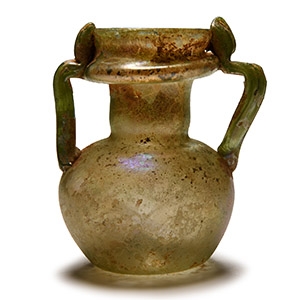
.jpg)
.jpg)
